Joint Pain
Joints help as the connection points between the bones in your body, enabling movement in your skeleton. These joints contain the shoulders, hips, elbows, and knees. Joint pain may manifest as pain, aches, or soreness in any of these bodily joints, a prevalent issue.
On some occasions, joint pain may arise from a disease or injury, with arthritis standing out as a major cause. However, other conditions or factors may also contribute to joint pain.
What is a Joint Pain?
Joint pain refers to pain experienced in one or more joints within the body. A joint is the location where two or more bones meet, such as the hip joint where the thigh bone connects with the pelvis.
Pain or discomfort in the joints is a common issue that typically affects the hands, feet, hips, knees, or spine. The pain may be persistent or intermittent, with some individuals experiencing stiffness, aching, or soreness. Others may describe sensations like burning, throbbing, or a grinding feeling. In the morning, joints may seem especially tight, but with movement and exercise, they usually become more flexible and comfortable. However, excessive strain on the joints can aggravate the pain.
Joint pain has the potential to limit the proper functioning of the joints and may slow one’s ability to carry out daily tasks. Severe joint pain can significantly impact an individual’s quality of life. Treatment should not only focus on managing the pain but also on enabling the individual to resume daily activities and lead a full life.
What are the causes of joint pain?
Arthritic Pain
Arthritis pain is typically caused by inflammation and damage to the joints. There are various forms of arthritis, each with its own set of causes.
Osteoarthritis
Osteoarthritis (OA) is the most prevalent kind of arthritis. It occurs when cartilage breaks down due to aging or injury.
Cartilage, a flexible tissue that cushions the ends of bones within joints, wears away over time, leading to bone-on-bone contact and pain.
While OA can affect any joint, it is most commonly found in the neck, fingers, lower back, hips, and knees. The pain associated with OA worsens with movement but improves with rest. Initially, it may present as sharp, intermittent pain before progressing to a continuous ache. Joint stiffness and limited range of motion are typical symptoms.
Although classic OA is typically non-inflammatory (with damage not triggered by inflammation), inflammation can still occur as a symptom. However, there is a more aggressive inflammatory subtype of OA known as erosive osteoarthritis, which is more prevalent in postmenopausal individuals. Symptoms of erosive OA include gradual-onset joint pain, stiffness, and swelling in multiple finger joints.
A condition known as gout is an inflammatory arthritis brought on by high blood uric acid levels. Excess uric acid can crystallize within the joints, leading to inflammation and pain.
Common joints affected by gout include the big toe, ankle, and knee. Gout attacks are characterized by sudden, severe, burning joint pain, typically in a single joint. Affected joints may appear discolored, warm, and swollen. Without treatment, gout may last up to two weeks.
Pseudogout
Pseudogout, another form of inflammatory arthritis, results from the accumulation of calcium crystals in joints such as the shoulders, elbows, wrists, knees, ankles, and feet. Symptoms of pseudogout resemble those of gout but may last longer.
Septic Arthritis
Septic arthritis is caused by an infection within a joint, most commonly due to bacteria. Swelling, warmth, stiffness, and fever are common symptoms, and they usually affect a single joint like the wrist, hip, knee, or ankle.
Viral Arthritis
Various viruses, including Hepatitis B and C, Parvovirus B19, HIV, and mosquito-borne viruses like CHIKV, can lead to viral arthritis. This type of arthritis is typically short-lived, with prolonged pain in some cases after the viral infection has resolved.
Rheumatoid Arthritis
Rheumatoid arthritis (RA) is a long-lasting autoimmune condition that progresses over time. It primarily impacts the joints. Initial signs can consist of:
- Tiredness
- Aching muscles
- Slight fever
- Dropping weight
- Hands feeling numb or tingling
From there, RA moves into the joints. It frequently shows up in the fingers and toes on one side first, then spreads to other joints like the neck, wrists, hips, and elbows. The affected joints often become rigid, warm, discolored, and swollen. In contrast to Osteoarthritis, RA pain usually gets better with movement, but it is typically worse in the morning and can last for over an hour.
Spondyloarthritis
Spondyloarthritis is a group of inflammatory rheumatic conditions that consist of four different disorders.
Ankylosing Spondylitis (AS): Ankylosing spondylitis is categorized as an axial spondyloarthropathy, primarily impacting the axial skeleton which includes the spine and central core bones. It commonly affects areas like the neck, back, and the sacroiliac (SI) joints located at the spine’s base. The joint pain associated with AS usually develops slowly, typically starting before the age of 45. Symptoms tend to improve with physical activity, akin to Rheumatoid Arthritis (RA). Morning stiffness lasting over 30 minutes is a common occurrence in AS.
Psoriatic Arthritis: Psoriasis, an autoimmune skin disorder, results in thickened skin patches covered with silvery scales. Around 30% of individuals with psoriasis may develop psoriatic arthritis, often impacting the end joints of fingers and toes. This form of arthritis can cause throbbing pain, stiffness, swelling, and nail issues like pitted nail beds. In some cases, joint pain appears before the onset of psoriasis.
Reactive Arthritis: Reactive arthritis manifests within six weeks after an infection in the urinary tract, genitals, or intestines, leading to joint pain and swelling. Bacteria such as Salmonella, Campylobacter, Shigella, Yersinia, and Chlamydia can trigger this condition, typically affecting the knee, ankle, and foot joints.
Arthritis Associated With Inflammatory Bowel Disease (IBD): Some individuals with inflammatory bowel disease (IBD) may develop a specific type of arthritis that intensifies during periods of bowel symptom flare-ups. IBD includes diseases including ulcerative colitis and Crohn’s disease. Arthritis linked to IBD results in pulsating joint pain and swelling, predominantly affecting larger joints like the knees and hips.
Systemic Lupus Erythematosus
Joint inflammation is a common occurrence in systemic lupus erythematosus, also known as lupus or SLE. This is a chronic autoimmune condition that has the potential to impact almost every organ in the body.
Lupus primarily targets the knees, wrists, and finger joints. It typically affects joints on one side of the body, with mornings often bringing stiffness that usually lasts only a few minutes.
The pain experienced in the joints is usually temporary and may shift from one joint to another throughout the day.
Polymyalgia Rheumatica
Polymyalgia rheumatica, an inflammatory joint disorder, leads to significant muscle and joint pains along with stiffness in the shoulders, neck, and hips. Occasionally, there may be slight swelling and tenderness in the wrists and fingers. Notably, the feet and ankles are generally unaffected, and this condition primarily impacts individuals over 50.
PMR is linked to an inflammatory vascular disorder known as giant cell (temporal) arteritis, which involves inflammation in the arteries of the head and scalp.
Other Systemic Rheumatic Diseases
Other whole-body systemic conditions can also cause arthritis, such as systemic sclerosis, which involves abnormal connective tissue growth; sarcoidosis, which forms cell lumps (granulomas) in organs and tissues, particularly the lungs; and familial Mediterranean fever, a rare genetic disorder that results in recurring bouts of fever, abdominal pain, lung inflammation, and swollen joints.
Other causes
Fibromyalgia
Fibromyalgia is a persistent pain condition characterized by dysfunction of the nervous system and overly sensitive nerves.
The pain associated with fibromyalgia tends to move across the body and can impact the joints, muscles, and connective tissues, often causing shooting, zinging, or tingling sensations. Additional symptoms may include extreme fatigue and cognitive impairment, commonly referred to as “fibro fog.” Some individuals with this condition may also experience joint pain and minor swelling.
Despite experiencing symptoms, diagnostic tests typically do not reveal significant inflammation or joint damage.
Hypothyroidism
Hypothyroidism is characterized by an underactive thyroid gland, with the most common cause being Hashimoto’s thyroiditis, an autoimmune condition where the body attacks the thyroid gland. The thyroid plays a crucial role in regulating various hormones, and when this balance is disrupted, it can lead to a range of symptoms including joint aches, stiffness, fatigue, hair loss, cold intolerance, weight gain, and constipation.
Lyme Disease
Lyme disease is transmitted through tick bites, and the bacteria present in joint tissue can cause inflammation and pain, known as Lyme arthritis. Swelling of one or more joints is a primary symptom, with common sites being the jaw, shoulder, elbow, wrist, hip, knee, and ankle.
Depression
Surprisingly, unexplained joint pain is a significant physical symptom of depression, alongside other common indicators such as diminished interest in enjoyable activities, appetite changes, sleep disturbances, difficulty concentrating, and feelings of hopelessness or guilt.
What are the indications of joint pain?
At times, your joint pain may need a visit to a physician. If you are unsure of the cause of your joint pain and are experiencing other unidentified symptoms, it is advisable to schedule an appointment.
Furthermore, seek medical attention if:
- The surrounding area of the joint is swollen, red, tender, or warm to the touch
- More than three days pass with the discomfort continuing.
- You have a fever without any accompanying flu symptoms
In case of the following situations, go to the emergency room:
- Suffered a severe injury
- The joint appears deformed
- Suddenly experiencing swelling in the joint
- Complete immobility of the joint
- Severe joint pain is present.
How to diagnose the joint pain?
Medical History
Healthcare providers utilize various methods to diagnose the underlying cause of back joint pain, which may include:
- A detailed medical history assessment
- A comprehensive physical examination
- Blood tests
- Imaging tests
- A procedure to withdraw fluid from the joint
- A tissue sample (biopsy) in rare instances
The specific diagnostic tests administered are tailored to your symptoms. The initial step involves gathering a medical history, focusing on specific aspects of the joint pain:
- Location of the pain
- Intensity levels
- Variation in pain throughout the day or in response to rest or activities
- Factors that worsen or alleviate the pain
Additionally, healthcare providers will inquire about any family history of joint issues, as certain conditions have a genetic predisposition. It is essential to inform your healthcare provider if any of the following are relevant:
- Recent fever
- Unusual symptoms like fatigue or unexplained weight loss
- Recent trauma or surgery
- Recent viral infection
Prepare to discuss these aspects before your appointment to provide valuable insight for an accurate diagnosis.
How Symptoms Help
Understanding how symptoms manifest can assist in narrowing down potential diagnoses. For instance, sudden, intense pain in a single joint could indicate conditions like gout, pseudogout, or a bacterial infection. On the other hand, the gradual onset of mild, achy pain affecting multiple joints may point towards rheumatoid arthritis, a type of spondylitis, or lupus. Joint pain from osteoarthritis tends to get better with rest but worsens with activity, while arthritis associated with rheumatoid arthritis improves with activity but worsens with rest.
Thoroughly detailing your symptoms during the initial appointment can expedite the process of getting the appropriate tests and treatments promptly.
Physical Examination
During the physical assessment, your healthcare provider will apply pressure to the affected joints. They will be observing for:
- Increased temperature
- Swelling
- Pain sensitivity
These symptoms indicate inflammation. Additionally, they will manipulate your joints to assess for restricted mobility or unusual sounds like popping or grinding.
The evaluator will also take note of whether the pain is present symmetric (in corresponding joints on both sides) or asymmetrically. Furthermore, they will search for specific indicators such as:
- Plaques (found in psoriatic arthritis)
- Heberden and Bouchard’s nodes (characteristic finger swelling in osteoarthritis)
- Tophi (crystal deposits associated with gout)
- Rheumatoid nodules (under-the-skin bumps seen in RA)
- Tender points (pain in 18 specific locations, sometimes used to detect fibromyalgia)
- Enlarged thyroid gland (goiter, a symptom of hypothyroidism)
While examination findings can sometimes lead to a clear diagnosis, often further investigation is required.
Laboratory Tests
For diagnosing many systemic causes of joint pain, various blood tests are essential. These may encompass:
- Complete blood count (CBC): Detects infections and blood-related issues
- Erythrocyte sedimentation rate (ESR or sed rate): Assesses inflammatory markers
- C-reactive protein (CRP): Evaluates inflammatory markers
- Rheumatoid factor: An antibody linked to RA, Sjögren’s syndrome, and other autoimmune conditions
- Anti-citrullinated protein antibody (anti-CCP): An indicator in autoimmune diseases
- Uric acid level: Assesses gout likelihood
- Anti-nuclear antibody (ANA): May suggest certain autoimmune diseases
- Kidney and liver function tests: Irregular results may point to inflammatory arthritis
- Hepatitis B and C tests: Important if joint pain is present
- Parvovirus test: Important if joint pain is noted
When autoimmune disease is suspected, specific antibody tests may be ordered by your provider. These antibodies are associated with your immune system’s defenses.
In cases of suspected fibromyalgia, you may be requested to complete questionnaires aiming to gauge pain levels, other symptoms, and their impact on your daily life.
Imaging Tests
Imaging examinations play a crucial role in confirming or excluding a medical diagnosis. For instance, an X-ray can uncover:
- Osteophytes (bone growths often found in osteoarthritis)
- Joint space narrowing (typical of osteoarthritis)
- Erosions (indentations in the bone associated with inflammatory arthritis)
Additional imaging procedures can offer detailed insights into a joint and its adjacent tissues. Some common ones are:
- Sonography
- Magnetic resonance imaging (MRI)
- Computed tomography (CT) scan
Few procedures to help confirm the diagnosis
Certain procedures are also useful in confirming a diagnosis, such as:
Joint Aspiration and Analysis of Synovial Fluid
Through joint aspiration, a needle is inserted to extract fluid from the synovium (joint lining) for microscopic analysis. This method aids in diagnosing conditions like gout and septic arthritis.
Synovial Biopsy
When tuberculosis or fungal infection is suspected, a healthcare provider may conduct a synovial biopsy. This involves obtaining a small tissue sample from the synovium, which is then examined in the laboratory.
What are the options for treating joint pain?
While there may not be a definitive cure for joint pain, there are strategies available to help manage it. Over-the-counter medication or simple daily exercises can sometimes alleviate the pain. However, in other instances, the pain may indicate underlying issues that require prescription medication or surgical intervention.
Treatment for joint pain may involve the following approaches:
- Home remedies: Your healthcare provider might suggest using a heating pad or ice packs on the affected area for short intervals multiple times a day. Additionally, soaking in a warm bath can provide relief.
- Exercise: Engaging in physical activity can help regain strength and functionality. Opting for low-impact activities like walking or swimming is recommended, while those involved in vigorous workouts may need to adjust their routine. Stretching activities that are gentle can also be helpful.
- Weight management: If necessary, losing weight can reduce strain on your joints as recommended by your provider.
- Medication: Pain relief can be achieved with over-the-counter options such as Acetaminophen or nonsteroidal anti-inflammatory drugs (NSAIDs). Stronger doses may require a prescription, especially for individuals with certain medical conditions.
- Topical treatments: Your provider may advise using ointments or gels directly on the painful joint area to alleviate pain, which can be obtained over the counter or via prescription.
- Dietary supplements: Supplements like glucosamine may aid in pain relief, but it’s essential to consult with your provider before taking them.
If the above treatments do not provide relief, your healthcare provider may recommend additional measures, including: - Supportive aids such as braces, canes, or orthotic devices support the joint and enhance mobility.
- Physical or occupational therapy and a tailored fitness plan gradually reduce pain and improve flexibility.
- Antidepressants to enhance sleep quality.
- Steroid injections into the joint for short-term pain and inflammation relief.
- Pain relief medications as needed.
It’s important to understand that everyone reacts differently to drugs. One person’s solution might not be another’s best one. It’s important to adhere to your provider’s instructions when taking any medication and to promptly report any side effects experienced.
Physical Therapy for Joint Pain
Physical therapy can be beneficial in alleviating joint pain symptoms, decreasing the necessity for pain-relieving medication, and potentially postponing or even avoiding surgical interventions. Treatment involving physical therapy for joint pain may encompass a range of exercises aimed at enhancing joint flexibility, along with guidance on maintaining proper posture and movement techniques to manage pain and prevent injuries.
Physical therapists may recommend assistive technology or changes to a person’s living space in order to reduce discomfort associated with arthritis. The specific physical therapy regimen required by an individual, including the frequency of sessions and the progress achieved, is contingent upon the type and severity of arthritis, as well as lifestyle, overall health, and various other factors.
Benefits
Physical therapy, particularly when it incorporates exercise, provides numerous advantages for individuals with joint pain. These benefits include:
- Assisting in maneuvering around injuries: Individuals experiencing pain and injuries may unknowingly move in ways that could exacerbate their condition. Physical therapy can educate individuals on how to safely navigate around these injuries. For instance, a physical therapist can demonstrate the proper use of a walker to prevent slouching or adopting postures that may lead to back pain.
- Strengthening muscles and enhancing joint flexibility: Those with arthritis may be hesitant to engage in exercise due to concerns about aggravating their symptoms. Physical therapy enables them to exercise safely, leading to stronger muscles and joints. This can help alleviate pain resulting from inactivity, enhance overall strength, and boost mobility.
- Alleviating pain: Physical therapy has the potential to decrease pain by strengthening muscles and joints and minimizing complications that arise from a sedentary lifestyle.
- Implementing environmental adjustments: Various modifications in the environment, such as using specific devices, can help alleviate arthritis symptoms. Physical therapists may suggest these changes and guide the proper use of aids like canes and braces.
- Adapting to injuries: Physical therapists can teach individuals how to adjust to injuries and pain without exacerbating them.
Types of physical therapy options for joint pain
Numerous forms of physical therapy can aid in managing joint pain. These options encompass:
- Hands-on Techniques: A physical therapist manipulates the affected joint or surrounding area, which may also involve massaging inflamed tissue.
- Exercise Programs: A physical therapist prescribes targeted exercises to address muscle weaknesses or accommodate injuries.
- Supportive Devices: Therapeutic recommendations for specific devices to facilitate easier movement.
- Post-operative Rehabilitation: Assistance from a therapist in restoring functionality post-surgery.
The selection of physical therapy depends on the type and location of joint pain, as well as the individual’s overall health. Consulting a physical therapist before commencing a home therapy routine is advisable.
For Knee pain
Individuals can engage in the following exercises:
- Sit-Stand Movements: Transition between standing and sitting in front of a supportive chair, repeating the sequence.
- Kickback Exercises: Using a sturdy chair for support, slowly lift and kick the foot back toward the hip. Hold briefly and repeat on each side.
- Stretching Routine: While lying flat on a surface, extend one arm forward and, using the opposite arm, gently stretch the foot upwards towards the hip.
For Hip Pain
People with hip pain can incorporate these exercises into their routine:
- Clam Exercise: Lying on one side with slightly bent knees, lift the top knee while keeping the feet together. After a brief hold, repeat on the other side.
- Leg Raises: Lie on one side with legs straight, lift the top leg, hold, and lower. Repeat on each side.
Neck Pain Exercises
Individuals can try these exercises for neck pain:
- Shoulder Rotations: Perform a rolling motion forward and backward with the shoulders.
- Neck Mobility: Rotate the neck left and right, then downwards towards each shoulder. Repeat on both sides.
- Shoulder Mobility: While standing or sitting upright, raise arms above the head, clasp hands, and gently rotate them to each side and forward and backward.
General Exercises
Here are some general exercises beneficial for joint pain management:
- Walking
- Low-impact water aerobics or swimming
- Engaging in yoga and tai chi
These exercises can contribute to improving joint pain symptoms and overall joint mobility.
What are the available surgical choices for easing joint pain?
Surgery could be an option if chronic joint pain persists despite medication, physical therapy, or exercise.
The surgical alternatives include:
- Arthroscopy: Arthroscopy involves the surgeon making small incisions in the skin over the joint. By using an arthroscope, a slender flexible fiber-optic tool, they can address issues like repairing cartilage or removing bone fragments within or near the joint.
- Joint fusion: Joint fusion involves the surgeon connecting the ends of bones to eliminate the joint. This procedure may involve using plates, screws, pins, or rods to stabilize the bones during the healing process. Joint fusions are most commonly performed on the hands, ankles, and spine.
- Osteotomy: During an osteotomy, the surgeon adjusts the long bones in the arm or leg to alleviate pressure on the compromised area of the joint. This surgery aims to alleviate pain and improve joint mobility.
- Joint replacement: When other treatments prove ineffective, joint replacement surgery may be necessary to swap out a deteriorated joint’s worn-out cartilage. Common areas for joint replacement include the hip, knee, and shoulder joints. The surgeon replaces parts of the bone with a metal or plastic artificial joint. This procedure typically yields positive outcomes, with many individuals experiencing long-term pain relief post-surgery.
Home Remedies to relieve joint pain
Joint pain arising from various causes can be effectively managed at home through lifestyle adjustments.
Therapeutic Measures:
- Temperature Therapy: Alleviate joint stiffness by alternating between cold and hot therapies. Warm showers in the morning can reduce joint stiffness while using an electric blanket or heating pad at night can be beneficial.
- Cold Therapy: Combat inflammation in the joints by applying a gel ice pack wrapped in a towel to the affected areas for 20 minutes multiple times per day.
Dietary Adjustments:
- Consuming whole grains, fruits, and vegetables is recommended to alleviate joint pain symptoms.
- Research indicates that foods rich in omega-3 fatty acids and antioxidants can aid in preventing inflammation. Examples include walnuts, chia seeds, flaxseed, fatty fish like salmon, tuna, and mackerel, as well as colorful fruits and vegetables, beans, nuts, red wine, and dark chocolate. Additionally, reducing processed carbohydrates, saturated fats, and trans fats is advised.
Physical Activity:
- Engaging in activities like walking or swimming can not only reduce pain but also enhance mood and quality of life. The CDC encourages individuals with arthritis to aim for a minimum of 150 minutes of physical activity weekly. Avoid high-impact exercises to prevent joint injuries.
- Tai chi and yoga are highly recommended for people with joint pain, as they have been shown to have positive effects on pain, physical function, depression, and quality of life in individuals with knee osteoarthritis.
Weight Management:
- Maintaining a healthy weight is crucial in alleviating joint pain and arthritis symptoms, particularly in the knees, hips, and feet. Individuals struggling with weight loss can seek guidance from a doctor who may refer them to a dietitian to initiate a weight loss program.
Supplements:
- Although dietary supplements show varying degrees of benefit in relieving inflammation and joint pain, some may offer relief. Examples include fish oil, ginger, glucosamine, and chondroitin sulfate. However, it is essential to remember that while supplements may help alleviate symptoms, they should never replace medical treatment for underlying conditions like rheumatoid arthritis (RA).
When is it necessary to seek medical help for joint pain?
If your everyday activities are being disrupted by pain, it is advisable to consult a healthcare professional. Swiftly identifying the root cause of your pain and commencing suitable treatment is crucial to alleviating pain and sustaining optimal joint function.
Medical attention should be sought if:
- Pain is accompanied by a fever.
- Unexplained weight reduction of at least 4.5 kg (10 pounds).
- Pain is hindering normal walking.
During the consultation, the healthcare provider will inquire extensively to pinpoint the probable cause of the pain. Be prepared to provide information on:
- Past injuries to the affected joint.
- Onset of joint pain.
- Family history of joint issues.
- Description of the pain experienced.
A physical examination of the affected joint will be conducted to assess pain levels and range of motion. Additionally, the provider will examine surrounding muscles, tendons, and ligaments for any signs of injury.
In certain cases, X-rays or blood tests may be ordered. X-rays can reveal joint degeneration, fluid accumulation, bone spurs, or other contributing factors to the pain. Blood tests are valuable in confirming a diagnosis or ruling out underlying conditions leading to the pain.
Summary
Joint pain is an extremely common issue that affects millions of people worldwide. It can occur in any joint in the body but is most frequent in the knees, hips, hands, and spine. The causes of joint pain are wide-ranging, from injuries and arthritis to more systemic conditions like fibromyalgia.
One of the most prevalent causes is osteoarthritis, a degenerative disease where the cartilage cushioning the joints gradually wears away. This allows the bones to grind together, creating stiffness, swelling, and pain. Another significant offender is rheumatoid arthritis, an autoimmune disease that triggers the body’s immune system to target the joints, causing excruciating inflammation.
Injuries from trauma or repetitive motions can also lead to joint pain issues like bursitis or tendinitis. Being overweight puts extra strain on weight-bearing joints like knees and hips. Sometimes joint pain stems from underlying conditions like gout, lupus, or infections.
Treatment depends on the root cause but often includes over-the-counter medication for pain and inflammation, physical therapy, hot and cold therapy, braces or assistive devices, injections of steroids or lubricants, or surgery in severe cases. Lifestyle changes like weight loss, exercise, and joint-protective techniques can provide relief as well.
FAQs
What causes joint pain?
Joint pain can be caused by a variety of factors including injury, overuse, arthritis, inflammation, autoimmune diseases, infections, and degenerative conditions such as osteoarthritis.
How can I relieve joint pain at home?
You can relieve joint pain at home by applying ice packs or heat pads, resting the affected joint, performing gentle stretching exercises, maintaining a healthy weight, using over-the-counter pain relievers, and trying natural remedies like turmeric or ginger.
When should I see a doctor for joint pain?
You should see a doctor if your joint pain is severe, lasts for more than a few days, is accompanied by swelling, redness, or warmth around the joint, or if you have difficulty moving the joint or bearing weight on it.
What are the treatment options for joint pain?
Treatment options for joint pain vary depending on the underlying cause but may include medications such as nonsteroidal anti-inflammatory drugs (NSAIDs), physical therapy, corticosteroid injections, joint supplements, and in severe cases, surgery.
Can joint pain be prevented?
While some causes of joint pain, like arthritis, cannot be prevented, you can reduce your risk of developing joint pain by maintaining a healthy weight, exercising regularly to strengthen muscles and improve flexibility, avoiding repetitive movements that strain joints, and wearing supportive footwear.
Is joint pain always a sign of arthritis?
No, joint pain can be caused by various conditions besides arthritis, such as injury, overuse, inflammation, infections, and autoimmune diseases. However, persistent joint pain should always be evaluated by a healthcare professional to determine the underlying cause.
Are there specific exercises that can help with joint pain?
Yes, low-impact exercises like swimming, cycling, and yoga can help improve joint flexibility, strengthen surrounding muscles, and reduce pain. It’s important to consult with a healthcare provider or physical therapist to develop an exercise regimen tailored to your specific needs and limitations.
Can diet play a role in managing joint pain?
Yes, certain foods may help reduce inflammation and alleviate joint pain. A diet rich in omega-3 fatty acids found in fish, nuts, and seeds, as well as antioxidants from fruits and vegetables, can be beneficial. Additionally, avoiding processed foods, excessive sugar, and alcohol may help manage inflammation and improve joint health.
References
- O’Connell, K. (2019, August 6). What to Know About Joint Pain. Healthline. https://www.healthline.com/health/joint-pain#outlook
- Professional, C. C. M. (n.d.). Joint Pain. Cleveland Clinic. https://my.clevelandclinic.org/health/symptoms/17752-joint-pain
- Mph, J. J. T. (2023, March 11). Joint Pain Causes and Treatment Options. Verywell Health. https://www.verywellhealth.com/severe-joint-and-muscle-pain-arthritis-2249981
- Dellwo, A. (2022, September 19). How to Get Relief From Arthritis Joint Pain. Verywell Health. https://www.verywellhealth.com/joint-pain-relief-5324073
- Joint Pain Relief: What You Can Do to Feel Better Now. (2018, December 20). Healthline. https://www.healthline.com/health/pain-relief/joint-pain-relief#surgery

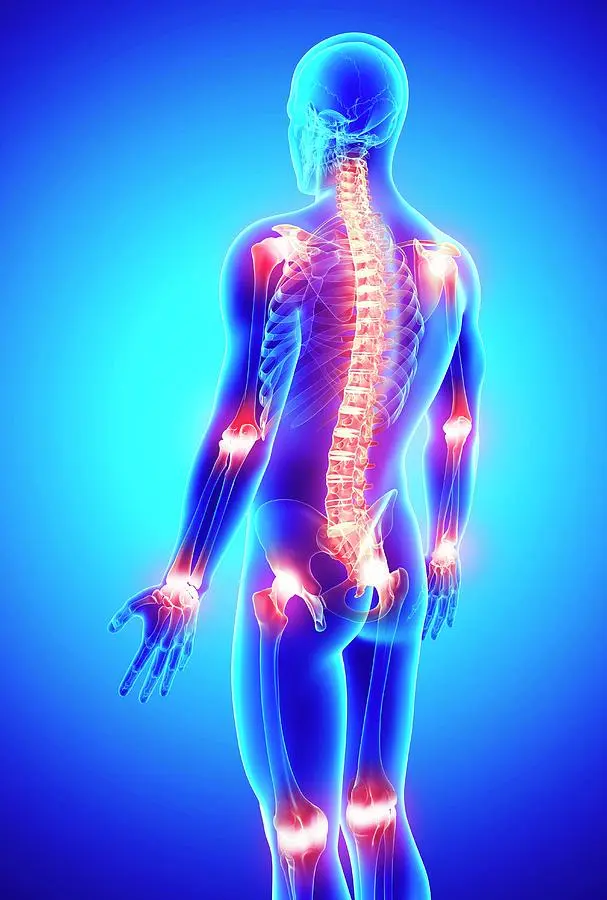

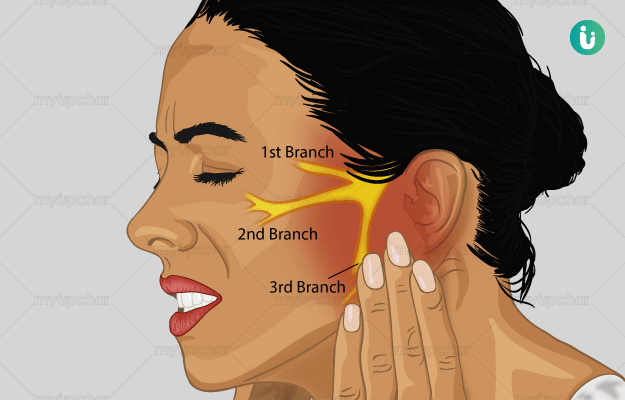

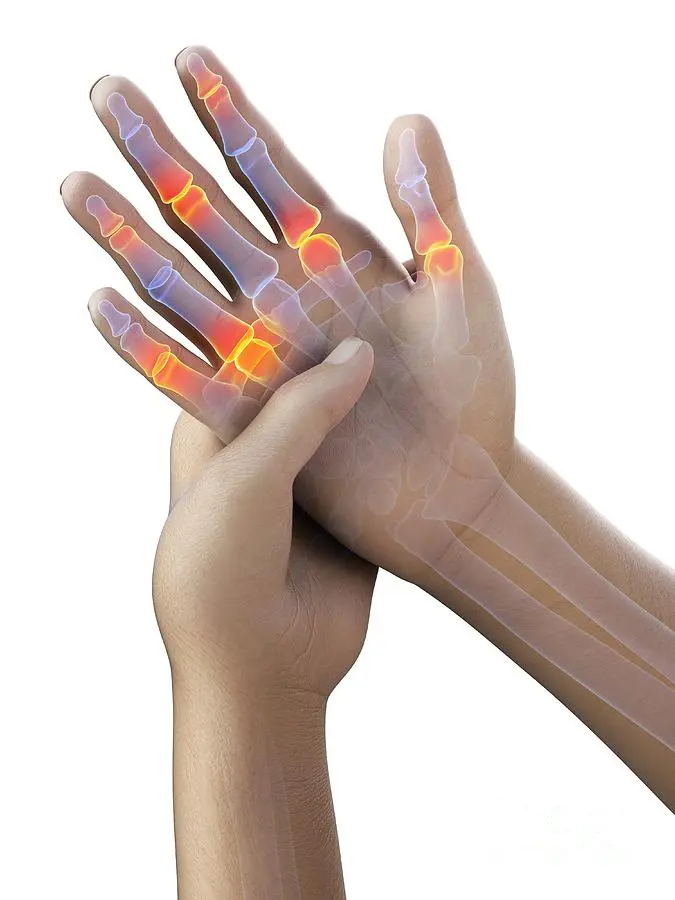
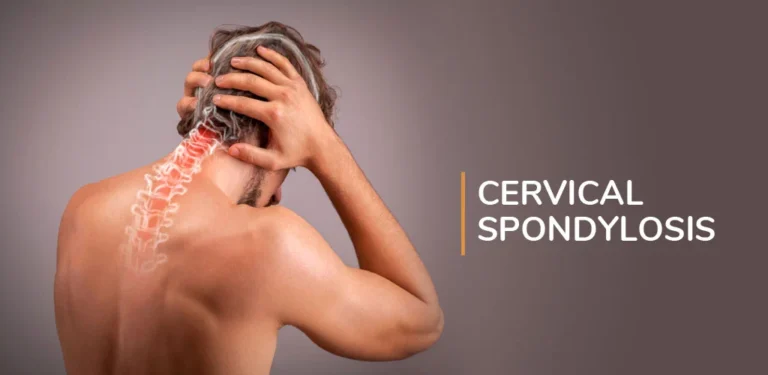
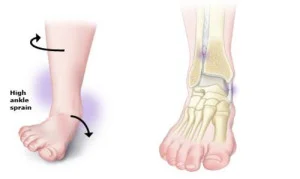
31 Comments